Sanae Takaichi and China Relations: Japan’s New Era of Diplomacy
Sanae Takaichi and China Relations: Why the World Is Watching
In October 2025, Sanae Takaichi made history by becoming the first female president of Japan’s ruling Liberal Democratic Party (LDP). Her rise immediately captured the attention of global analysts and policymakers, especially in Beijing. As a conservative leader known for her national security priorities, Takaichi’s views on China relations could reshape the balance of power in East Asia.
For decades, Japan–China relations have swung between economic cooperation and strategic rivalry. Yet with Takaichi now at the helm, observers believe a new chapter is beginning—one marked by tougher rhetoric, stricter defense policies, and a stronger emphasis on economic security. These shifts signal not only a domestic transformation within Japan but also potential ripples across the broader Indo-Pacific region.
Why does this matter now? Because the dynamics between Tokyo and Beijing have grown increasingly complex. Japan relies on China as its largest trading partner, but rising tensions over the Taiwan Strait and the South China Sea have strained diplomatic trust. Takaichi’s challenge is clear: how to protect Japan’s sovereignty and security while maintaining stability in one of the world’s most critical bilateral relationships.
Her policy philosophy, deeply rooted in realism, contrasts sharply with the more cautious approaches of previous leaders. She has consistently argued that Japan must not be economically or strategically dependent on any single power—an unmistakable reference to China. This conviction places her at the intersection of opportunity and risk: she can strengthen Japan’s global standing, but she may also provoke new friction with Beijing.
As this article will explore, Sanae Takaichi’s China relations represent more than just a shift in diplomacy—they reflect a broader struggle over Japan’s identity and role in a rapidly changing world. The following sections will analyze her political ideology, Beijing’s reaction, and the future scenarios that could define East Asia’s next decade.
In short, Takaichi’s leadership could either stabilize or destabilize Japan–China relations. Understanding her approach is key to anticipating the region’s next geopolitical moves.
Sanae Takaichi’s Political Roots: Conservatism, Nationalism, and Security First
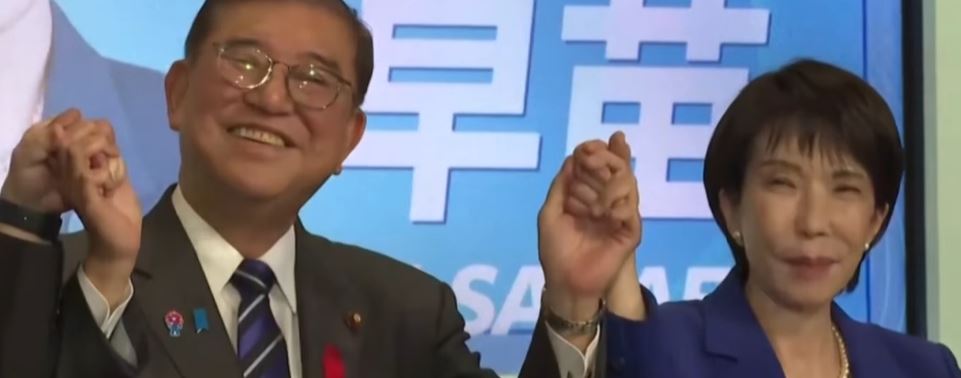
To understand Sanae Takaichi’s China relations, one must first grasp her ideological foundation. Takaichi has long been a symbol of Japan’s conservative resurgence—an advocate for national strength, constitutional revision, and technological independence. Her political journey reflects the broader evolution of Japan’s postwar identity: from pacifism toward proactive defense and strategic autonomy.
Born in Nara Prefecture in 1961, Takaichi entered politics after studying political science at Kobe University and briefly working in the private sector. She was first elected to Japan’s House of Representatives in 1993. Over the decades, she served in multiple cabinet roles, including as Minister of Internal Affairs and Communications. Her tenure in government was defined by a clear message: Japan must defend its sovereignty, innovate independently, and protect its national interests from foreign interference.
Ideologically, Takaichi aligns with the nationalist and traditionalist wing of the Liberal Democratic Party (LDP). She supports constitutional revision, particularly the reinterpretation of Article 9, which limits Japan’s right to maintain military forces. While many see this stance as controversial, her supporters argue it’s essential in an era of growing regional tension. Takaichi has repeatedly stated that Japan’s peace cannot depend on the goodwill of neighboring powers—a statement that underscores her firm position toward China.
Her conservative philosophy is not confined to security policy. It also extends to cultural and economic issues. Takaichi emphasizes Japan’s “spiritual independence” and the protection of national industries. She advocates for stronger economic security measures, particularly in fields like semiconductors, energy, and critical infrastructure—areas where China’s influence has grown significantly in recent years. These priorities have made her a key figure in Japan’s emerging strategy of “strategic resilience.”
Throughout her career, Takaichi has been closely associated with Japan’s right-leaning intellectual circles, including the Nippon Kaigi (Japan Conference), which promotes patriotic education and historical revisionism. While critics label her a hardliner, her political allies describe her as a realist who recognizes Japan’s need to adapt to new geopolitical realities. Under her leadership, Japan’s diplomacy is expected to shift from “engagement and restraint” to “assertion and protection.”
Understanding Takaichi’s background is vital for interpreting her stance toward Beijing. Her worldview was shaped during the Cold War, when Japan depended heavily on U.S. protection but sought to balance relations with China. Today, she believes that balance has tilted too far in China’s favor. In interviews, she has argued that Japan must regain leverage through technology, defense partnerships, and consistent principles. This forms the core of her approach to Sanae Takaichi’s China relations.
Ultimately, her political orientation signals a decisive turn for Japan. She represents a generation of leaders who view diplomacy through the lens of national security rather than economic convenience. For Beijing, this means Tokyo’s new leadership may be less predictable—but also more determined to defend Japan’s interests. Whether this results in renewed tension or cautious respect remains to be seen.
How Sanae Takaichi Views China: Policy Signals and Strategic Intent
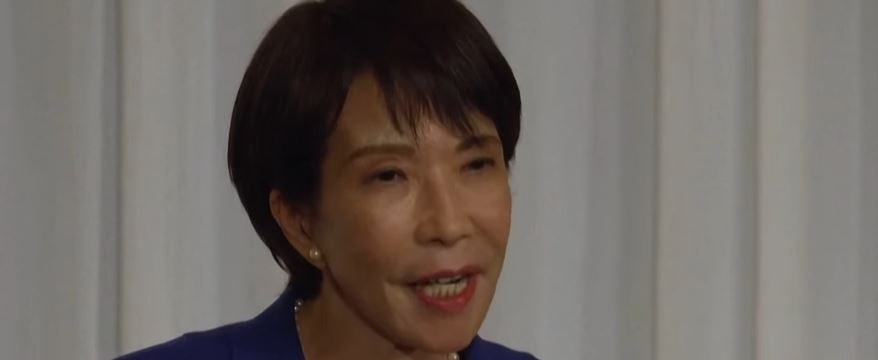
To fully understand Sanae Takaichi’s China relations, it’s essential to examine her public statements and policy direction over the years. Unlike some previous Japanese leaders who emphasized engagement and dialogue with Beijing, Takaichi’s tone has consistently been one of caution and strategic vigilance. She has positioned herself as a defender of Japan’s sovereignty in the face of what she perceives as growing assertiveness from China.
In multiple interviews and Diet sessions, Takaichi has warned that Japan’s security and technological independence are at risk due to “excessive economic reliance” on China. She has argued that Japan must reduce vulnerabilities in its supply chains, particularly in key sectors like semiconductors, rare earth materials, and defense technologies. Her view aligns with a broader global shift toward economic security and “de-risking,” a term also used by G7 nations to describe the effort to reduce strategic dependence on China.
Takaichi has also been vocal about the importance of defending democratic values and human rights. She has openly criticized Beijing’s actions in Hong Kong and the Xinjiang Uyghur region, calling for Japan to take a stronger moral stance in international forums. This assertiveness has drawn both praise and criticism—supporters see her as a principled leader, while detractors warn her rhetoric may further strain fragile diplomatic ties.
Her approach to the Taiwan issue is another defining element of her China policy. Takaichi has repeatedly stated that the stability of the Taiwan Strait is directly linked to Japan’s national security. She supports expanding Japan’s defense cooperation with the United States and other Indo-Pacific allies to ensure deterrence in the region. This marks a clear departure from the more cautious language traditionally used by Japanese leaders when discussing Taiwan.
Takaichi’s speeches also reveal her belief in “technological sovereignty.” She has argued that Japan must control its own advanced technologies—such as AI, quantum computing, and cyber defense—without depending on supply chains influenced by Chinese firms. In 2022, she pushed for stricter regulations on technology transfers and advocated for stronger screening of foreign investments in sensitive industries. These policies were designed to prevent intellectual property leakage and maintain Japan’s innovation advantage.
Her stance is not purely confrontational, however. Takaichi acknowledges the economic interdependence between Japan and China, recognizing that complete decoupling would harm both nations. She has emphasized the need for “selective engagement”—maintaining trade and communication in non-sensitive areas while strengthening safeguards in critical sectors. This dual-track approach reflects her pragmatic understanding of international politics: firmness without recklessness.
In essence, Sanae Takaichi’s China relations are defined by strategic caution, economic resilience, and moral conviction. Her worldview is shaped by the belief that Japan’s peace and prosperity depend on strength, not concession. Whether her policies will lead to a stable long-term framework or deepen mutual distrust remains one of the most important questions in East Asian diplomacy today.
Her message to both Japan and the world is clear: a strong Japan ensures peace in Asia. How Beijing interprets that message will determine the future of regional stability.
China’s Reaction to Sanae Takaichi: Caution, Criticism, and Strategic Observation
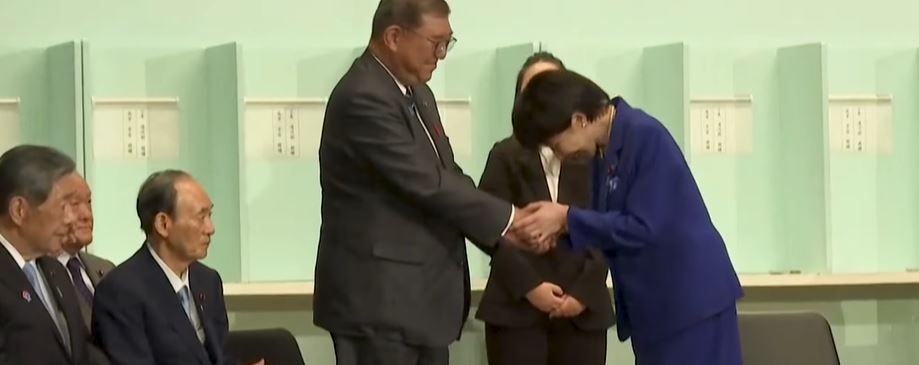
Since her rise to power, Sanae Takaichi’s China relations have become a focal point of attention in Beijing’s media and diplomatic circles. Chinese state outlets and political analysts have closely followed her statements, often framing her as a “nationalist” and “hardliner” in Japan’s political landscape. This characterization reflects both apprehension and strategic calculation on China’s part, as Beijing seeks to assess how Japan’s new leadership might influence regional stability.
Immediately following her election as president of Japan’s Liberal Democratic Party in October 2025, several Chinese media platforms—including Global Times and People’s Daily—published editorials highlighting her conservative and security-first views. These reports described Takaichi as a politician “deeply influenced by right-wing ideology,” suggesting that her policies could “disrupt the delicate balance of East Asia.” Beijing’s official response, however, remained restrained, signaling a cautious wait-and-see approach.
Behind this restraint lies genuine concern. Chinese diplomats have privately expressed worries that Takaichi’s government could align even more closely with Washington on strategic matters, particularly regarding Taiwan and the South China Sea. Her public endorsement of Taiwan’s “security relevance” for Japan has been viewed by Chinese analysts as a direct challenge to the One-China principle. This sentiment was echoed in a recent editorial by the South China Morning Post, which noted that “Tokyo’s policy may become less flexible under Takaichi’s leadership.”
In addition to her security stance, Beijing is also wary of Takaichi’s economic and technological agenda. Her advocacy for “economic security” and “supply chain independence” directly targets China’s expanding role in regional trade. Chinese experts on Japanese affairs have commented that Tokyo’s new industrial policies—particularly restrictions on sensitive technology exports—mirror Washington’s containment strategies. As a result, China’s state-run think tanks have labeled Japan’s policy under Takaichi as “protectionist realism.”
However, it would be an oversimplification to describe Beijing’s reaction as purely hostile. Chinese scholars at institutions such as the Chinese Academy of Social Sciences (CASS) have acknowledged that Takaichi’s assertive leadership could also bring “clarity” to bilateral relations. One researcher wrote, “Her consistency and strategic discipline might reduce ambiguity in Japan–China relations, even if tensions rise.” In other words, while Beijing distrusts her motives, it may respect her predictability.
Another interesting element of China’s response has been the tone of online discourse. On Chinese social media platforms such as Weibo, commentary on Takaichi ranges from criticism to curiosity. Some users accuse her of “reviving militarism,” while others admire her decisiveness compared to Japan’s previous leaders. This dual sentiment mirrors the broader ambivalence within Chinese society toward Japan—resentment over history but recognition of Japan’s technological and institutional success.
Diplomatically, Beijing appears committed to maintaining dialogue, at least for now. Chinese Foreign Ministry statements have stressed the “importance of stable and constructive relations” with Tokyo. Yet, between the lines, analysts detect a sense of strategic caution. Takaichi’s emphasis on defense cooperation with the U.S. and her interest in joining security frameworks such as AUKUS have undoubtedly raised alarms in Beijing’s foreign policy establishment.
In summary, Sanae Takaichi’s China relations have triggered a complex mixture of criticism, caution, and reluctant respect in Beijing. China’s leadership recognizes that confrontation would be costly, but accommodation under Takaichi’s terms could be politically difficult. This diplomatic tension sets the stage for a new, more transparent, yet more competitive phase in Japan–China relations.
As one Chinese analyst put it: “We may not like her tone, but we understand her logic. Japan under Takaichi will be a tougher, more independent neighbor.”
Japan–China Relations Under Pressure: Challenges Facing Takaichi’s Administration
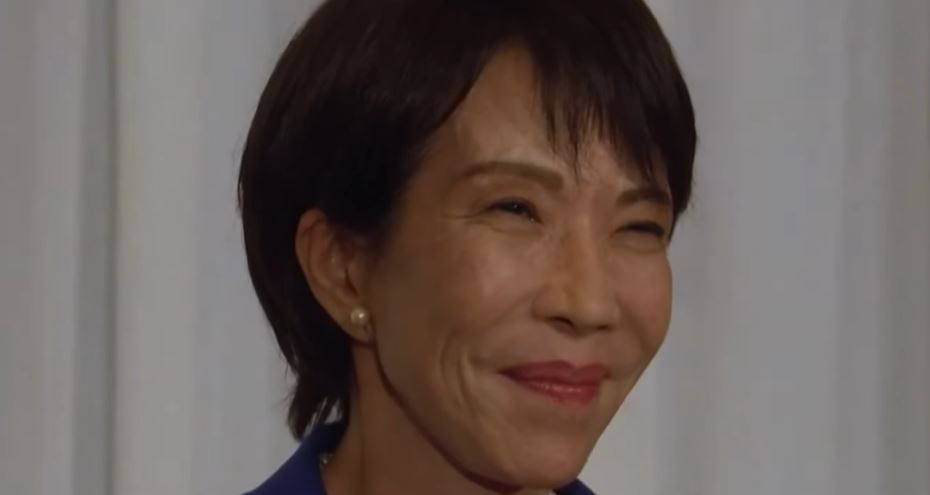
As Sanae Takaichi’s China relations continue to shape the region’s diplomatic landscape, Japan now stands at a critical crossroads. The dynamic between Tokyo and Beijing is increasingly defined by competition rather than cooperation, driven by security tensions, economic interdependence, and diverging political systems. For Takaichi, balancing these conflicting realities will be one of the most demanding tests of her leadership.
Japan’s relationship with China has always been complex—a mix of economic partnership and strategic caution. China remains Japan’s largest trading partner, accounting for over 20% of its total exports and imports. Yet, the two countries frequently clash over territorial issues such as the Senkaku (Diaoyu) Islands and military activities in the East China Sea. Under Takaichi’s leadership, these frictions are likely to intensify as she pushes for a more assertive defense policy and deeper alignment with the United States.
One of Takaichi’s immediate challenges is maintaining economic stability while implementing her agenda of “strategic decoupling.” She has signaled her intent to reduce dependency on Chinese supply chains, particularly in sensitive sectors like semiconductors, rare metals, and defense-related components. However, Japanese manufacturers remain heavily invested in the Chinese market. A sudden economic rift could harm Japan’s export competitiveness and domestic employment—two factors that directly influence her political capital.
Another pressing issue involves regional security. The Taiwan Strait has become a flashpoint in East Asian geopolitics, and Japan’s proximity makes it impossible to ignore. Takaichi has described Taiwan’s stability as “a core interest for Japan,” echoing language more commonly used by Washington than Tokyo. This position may reinforce Japan’s credibility among democratic allies but will inevitably heighten tension with Beijing. It also raises questions about how far Japan is willing to go in a crisis scenario involving Taiwan.
The evolving military balance in the Indo-Pacific further complicates her diplomatic options. China’s defense spending continues to grow rapidly, while Japan’s new National Security Strategy (NSS), which Takaichi supports, commits to doubling defense expenditures to 2% of GDP by 2027. Such moves signal a long-term shift in Japan’s strategic posture—from reactive to proactive defense. While this may strengthen deterrence, it could also trigger a regional arms race if not managed with transparency and restraint.
In the economic arena, Takaichi faces a delicate balancing act. Her administration seeks to safeguard Japan’s technological leadership by tightening export controls and promoting domestic innovation. Yet, these measures risk retaliation from Beijing, which could target Japanese companies operating in China or restrict key materials like rare earths. Maintaining a steady flow of dialogue through multilateral frameworks such as ASEAN and the G20 will be essential to prevent escalation.
Diplomatically, Japan must also manage its image in the broader Asia-Pacific region. While many Southeast Asian nations quietly support Japan’s efforts to counterbalance China, they also fear being forced to choose sides. Takaichi’s challenge is to present Japan not merely as a U.S. ally, but as an independent regional actor committed to peace and stability. This nuanced diplomacy will determine whether Japan can maintain influence without deepening division.
Ultimately, Sanae Takaichi’s China relations encapsulate a new era of calculated tension—one where power politics, economic strategy, and national identity converge. Her success will depend on striking a balance between assertiveness and diplomacy, ensuring Japan’s security without isolating it from Asia’s economic future.
As one Tokyo-based analyst noted, “Japan’s challenge under Takaichi is not to choose between China and the West—but to redefine its role between them.”
Future Scenarios: The Road Ahead for Japan–China Relations Under Takaichi
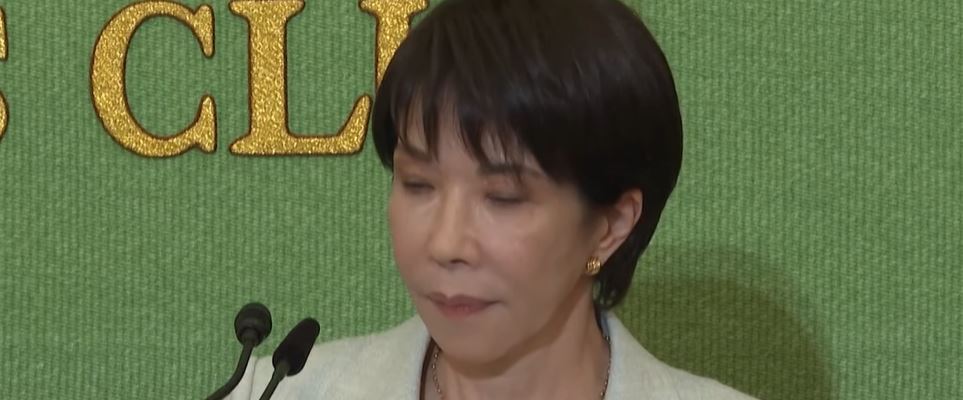
As the geopolitical balance in East Asia continues to shift, Sanae Takaichi’s China relations will play a decisive role in determining the region’s stability. The choices her administration makes in the coming years could either open a new era of cautious cooperation or deepen long-standing divisions. Analysts generally outline three possible scenarios for Japan–China relations under Takaichi’s leadership: pragmatic engagement, managed competition, or strategic confrontation.
Scenario 1: Pragmatic Engagement
In the most optimistic outcome, Japan and China could enter a period of limited but constructive engagement. Takaichi, while maintaining her firm security stance, may choose to stabilize relations through dialogue, economic coordination, and multilateral diplomacy. She could use regional forums such as the ASEAN+3 and APEC to pursue issue-based cooperation—on climate change, digital governance, and regional infrastructure. This approach would demonstrate that Japan can protect its interests without isolating itself from Asia’s economic future.
Such a scenario would require mutual restraint. Beijing would need to reduce military pressure in the East China Sea and improve transparency on maritime activities, while Tokyo would avoid provocative rhetoric on sensitive issues like Taiwan. If managed carefully, this balance could lead to what some experts call “competitive coexistence,” a state of predictable rivalry sustained by shared economic interests.
Scenario 2: Managed Competition
A more likely scenario, according to regional analysts, is one of managed competition. In this framework, Japan and China acknowledge their strategic rivalry but maintain structured communication channels to prevent crises. Takaichi could reinforce Japan’s defense partnerships with the U.S., Australia, and India under the Quad framework while still engaging China in trade, environmental, and regional stability dialogues.
This model reflects the realities of globalization—both nations depend on each other economically yet compete politically and militarily. For Takaichi, success in this scenario would mean maintaining deterrence without crossing the line into open hostility. Her government’s emphasis on transparency, consistent messaging, and deterrence through strength would be key to avoiding miscalculation.
Scenario 3: Strategic Confrontation
The most dangerous scenario is a sharp deterioration in bilateral ties leading to open confrontation. Escalating maritime incidents, intensified rhetoric over Taiwan, or retaliatory trade sanctions could trigger a new phase of hostility. In this environment, Japan’s rapid defense expansion—doubling military spending and strengthening U.S. alignment—would likely be perceived by China as containment. Such perceptions could fuel a security spiral in the Indo-Pacific, heightening risks of misjudgment or accidental conflict.
While Takaichi’s emphasis on sovereignty and deterrence resonates with domestic audiences, overreliance on hard power could narrow Japan’s diplomatic flexibility. Should both nations harden their stances simultaneously, East Asia might enter a prolonged period of geopolitical stagnation, with regional organizations weakened and economic growth slowed by uncertainty.
Evaluating the Outlook
The future of Sanae Takaichi’s China relations depends largely on her ability to blend realism with restraint. Her administration must develop a clear diplomatic narrative that defends Japan’s security interests while signaling openness to pragmatic cooperation. Maintaining dialogue at multiple levels—governmental, business, and cultural—will be essential for crisis prevention.
Ultimately, the trajectory of Japan–China relations will not be shaped by ideology alone but by how effectively both nations manage their interdependence. The coming decade will test whether Asia’s two major powers can coexist within a shared regional order—or whether competition will give way to confrontation.
As one policy expert in Tokyo observed, “Takaichi’s leadership will define not only Japan’s foreign policy, but the entire architecture of peace in East Asia.”
Conclusion: The Future of Sanae Takaichi’s China Relations — Between Risk and Renewal

As Japan moves deeper into a new geopolitical era, Sanae Takaichi’s China relations stand as both a challenge and an opportunity. Her leadership embodies a decisive break from the cautious diplomacy of the past, emphasizing sovereignty, resilience, and strategic independence. Yet this assertive stance also introduces new complexities—requiring careful navigation between deterrence and dialogue, autonomy and alliance.
Over the course of her political career, Takaichi has made it clear that Japan must define its foreign policy on its own terms. Her approach to China reflects this conviction: strong enough to command respect, but disciplined enough to prevent confrontation. The real test, however, lies in execution. Maintaining deterrence without escalation, and pursuing reform without alienation, will be key to sustaining regional stability.
In the short term, both nations are expected to continue a cautious pattern of engagement. Beijing, wary of overreaction, will likely observe how Tokyo’s defense buildup translates into policy. Japan, under Takaichi’s leadership, will attempt to balance domestic expectations for firmness with international calls for restraint. This mutual observation period could define the tone of Japan–China diplomacy for the next five years.
Longer term, the trajectory of Sanae Takaichi’s China relations will depend on how effectively she manages Japan’s dual identity—as a democratic ally of the West and a key stakeholder in Asia. Her administration will need to strengthen economic resilience while preserving open trade, deepen defense cooperation without provoking conflict, and champion democratic values without isolating neighboring nations. This multidimensional balancing act will determine whether Japan emerges as a stabilizing or disruptive force in the Indo-Pacific.
Takaichi’s rise has already reshaped the strategic psychology of East Asia. By framing national security as the foundation of diplomacy, she has redefined what it means to lead in a region marked by rapid change and rising uncertainty. Supporters argue that her approach restores Japan’s self-confidence after years of political stagnation. Critics warn that her firmness risks entrenching mistrust with China. Both perspectives are valid—and both reveal the magnitude of her influence.
What should observers watch next? Analysts point to three key indicators:
- Defense diplomacy: How Tokyo coordinates security policy with the U.S., Australia, and the Philippines while keeping communication open with Beijing.
- Economic policy: The evolution of Japan’s economic security strategy and its impact on supply chains, investment, and trade with China.
- Public sentiment: Domestic support for Takaichi’s leadership will determine how much political space she has to manage relations with China.
In the end, Sanae Takaichi’s China relations symbolize Japan’s transformation from a reactive power to a proactive one. Her administration may not resolve every tension, but it will likely set the tone for a new generation of diplomacy—one defined by conviction, calculation, and a search for balance in an unstable world.
As one regional scholar concluded, “Takaichi represents both Japan’s past resolve and its future uncertainty. Her diplomacy will define how Asia remembers this decade.”
Related Articles
- Japan–China Tensions Rise Over Defense Policy (Nikkei Asia)
- Japan’s Foreign Policy Reset Under Sanae Takaichi (The Diplomat)
- Japan Tightens Economic Security Laws Over China Concerns (Reuters)
- The Indo-Pacific Balance of Power in 2025 (Brookings Institution)
- エコカー減税は2026年から激変?EV優遇とハイブリッド縮小の全貌
- 日銀利上げの黒幕は財務省か?高市積極財政が潰される理由
- 中国経済 世界からの投資が9割減少 外交姿勢の失敗
- EUのデリスキングとは?中国依存を減らす新戦略を解説
- 日伊同盟と対中国戦略|新秩序を形作る中堅国連携
Sanae Takaichi and China Relations: How Japan’s Conservative Leadership Is Reshaping East Asia
By Political Insight GPT | Updated: October 2025
Sanae Takaichi and China Relations: Why the World Is Watching
In October 2025, Sanae Takaichi made history by becoming the first female president of Japan’s ruling Liberal Democratic Party (LDP). Her rise immediately captured the attention of global analysts and policymakers, especially in Beijing. As a conservative leader known for her national security priorities, Takaichi’s views on China relations could reshape the balance of power in East Asia.
For decades, Japan–China relations have swung between economic cooperation and strategic rivalry. Yet with Takaichi now at the helm, observers believe a new chapter is beginning—one marked by tougher rhetoric, stricter defense policies, and a stronger emphasis on economic security. These shifts signal not only a domestic transformation within Japan but also potential ripples across the broader Indo-Pacific region.
Why does this matter now? Because the dynamics between Tokyo and Beijing have grown increasingly complex. Japan relies on China as its largest trading partner, but rising tensions over the Taiwan Strait and the South China Sea have strained diplomatic trust. Takaichi’s challenge is clear: how to protect Japan’s sovereignty and security while maintaining stability in one of the world’s most critical bilateral relationships.
Her policy philosophy, deeply rooted in realism, contrasts sharply with the more cautious approaches of previous leaders. She has consistently argued that Japan must not be economically or strategically dependent on any single power—an unmistakable reference to China. This conviction places her at the intersection of opportunity and risk: she can strengthen Japan’s global standing, but she may also provoke new friction with Beijing.
As this article will explore, Sanae Takaichi’s China relations represent more than just a shift in diplomacy—they reflect a broader struggle over Japan’s identity and role in a rapidly changing world.
Sanae Takaichi’s Political Roots: Conservatism, Nationalism, and Security First
To understand Sanae Takaichi’s China relations, one must first grasp her ideological foundation. Takaichi has long been a symbol of Japan’s conservative resurgence—an advocate for national strength, constitutional revision, and technological independence.
Born in Nara Prefecture in 1961, Takaichi entered politics after studying political science at Kobe University. First elected in 1993, she has since held numerous cabinet roles, including Minister of Internal Affairs and Communications. Her political journey reflects Japan’s shift from postwar pacifism toward proactive defense and strategic autonomy.
Ideologically, Takaichi supports constitutional revision, particularly Article 9, which limits Japan’s military forces. She stresses that peace cannot depend on the goodwill of neighboring powers—an unmistakable message directed at China.
Beyond defense, she champions “economic independence,” advocating for innovation in key industries such as semiconductors and energy. Her alliance with Japan’s conservative intellectual circles reinforces her image as a realist—pragmatic, disciplined, and deeply protective of Japan’s sovereignty.
How Sanae Takaichi Views China: Policy Signals and Strategic Intent
Sanae Takaichi’s China relations reveal a clear philosophy: peace through strength. She has repeatedly warned against overreliance on Chinese supply chains and called for greater investment in economic security. Her administration has prioritized resilience in semiconductors, defense technology, and rare earth materials.
Takaichi has also taken a principled stance on human rights issues in Hong Kong and Xinjiang, calling for “moral clarity” in foreign policy. On Taiwan, she emphasizes that stability in the Taiwan Strait is “a matter of life and death” for Japan, advocating closer cooperation with the U.S. and other allies.
While her tone toward China is firm, she has stopped short of total economic decoupling. Instead, she promotes “selective engagement,” maintaining trade in non-sensitive areas while securing critical sectors. This nuanced approach—firm yet pragmatic—defines her diplomatic style.
China’s Reaction to Takaichi: Caution, Criticism, and Strategic Observation
Beijing’s response to Sanae Takaichi’s China relations has been a mix of skepticism and respect. Chinese media, including Global Times and People’s Daily, label her a “right-wing nationalist,” warning that her rise could unsettle East Asia’s balance. Yet official responses remain measured, suggesting a watchful strategy rather than outright hostility.
Analysts in China view Takaichi’s policies—particularly her emphasis on Taiwan and defense cooperation with the U.S.—as signs of deepening strategic rivalry. Still, some scholars at the Chinese Academy of Social Sciences acknowledge her “consistency and discipline,” noting that predictability, even if tough, is preferable to uncertainty.
The overall tone from Beijing is cautious. While it distrusts her motives, it respects her strategic clarity. This dynamic has created an uneasy equilibrium—less warm, but more transparent.
Japan–China Relations Under Pressure: Challenges Facing Takaichi’s Administration
For Sanae Takaichi’s China relations, the biggest test lies in balancing security with economic interdependence. China remains Japan’s largest trading partner, yet defense tensions and maritime disputes persist. Takaichi’s efforts to reduce technological dependency must contend with Japan’s vast business ties to China.
Regionally, Taiwan’s security looms large. Takaichi’s firm rhetoric reinforces Japan’s alliance with the U.S. but risks provoking Beijing. At home, she faces pressure from both industries reliant on China and voters demanding stronger defense. Managing these opposing forces will define her political success.
The broader question: Can Japan strengthen deterrence without isolating itself economically? Takaichi’s balancing act between assertiveness and diplomacy will shape East Asia’s security landscape.
Future Scenarios: The Road Ahead for Japan–China Relations Under Takaichi
Scenario 1: Pragmatic Engagement
The best-case outcome sees Japan and China pursue limited cooperation on trade, climate, and regional stability. Dialogue through forums like ASEAN and APEC could rebuild trust.
Scenario 2: Managed Competition
The most realistic path is “managed competition,” where rivalry coexists with communication. Japan strengthens its alliances but avoids open confrontation, focusing on deterrence and transparency.
Scenario 3: Strategic Confrontation
The worst-case scenario is open hostility—maritime clashes, trade sanctions, and rising nationalism. In such a case, both nations would suffer economically while the Indo-Pacific faces instability.
Ultimately, Sanae Takaichi’s China relations will depend on her ability to combine strength with restraint. Japan’s leadership in this delicate balance could define Asia’s future.
Conclusion: The Future of Sanae Takaichi’s China Relations — Between Risk and Renewal
Sanae Takaichi’s China relations symbolize Japan’s transition from cautious diplomacy to strategic independence. Her leadership represents a more confident, assertive Japan—one seeking respect rather than approval. Yet with this assertiveness comes responsibility: to manage power wisely, avoid escalation, and lead with integrity.
The coming years will test whether Japan can maintain peace through strength or be drawn into deeper rivalry. Observers should watch three fronts—defense diplomacy, economic policy, and public sentiment—to gauge the direction of her foreign policy.
Regardless of outcome, one thing is certain: Takaichi’s leadership has redefined Japan’s role in Asia. Her policies may provoke tension, but they also reassert Japan’s voice in shaping the future of regional order.


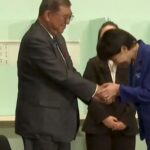
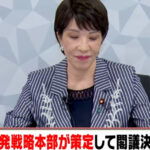
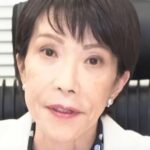

ディスカッション
コメント一覧
まだ、コメントがありません